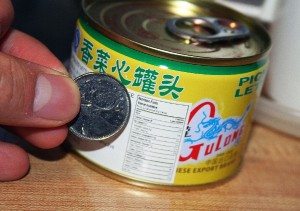The Nutritional Information labeling is a description intended to inform the consumer of the nutritional properties of the food. The Nutritional Facts on the label provides detailed information about a food’s nutrient content, such as the amount of Protein, carbohydrates, Sugar, fat and Calories.
This information available on the label enables the consumer to compare the nutritional value of similar food products and on comparing the relevant nutritional value of different food products, the consumer can make the healthy choice of food.
The growing children or the sports person who need high calorie, diet rich in proteins and other nutrients or the people who are obese or suffering from diabetes or high blood lipid, need to follow a special or restricted diet. In such conditions the label declaration regarding nutritional facts makes it easier to select the appropriate food and can also help to compare similar foods to decide which is a healthier choice.
From the manufacturer point of view the relevant Nutritional Value helps to attract the consumers towards the product and requirements for nutrition information on food labels would encourage improving the nutrient profile of their product.
The label of nutritional value creates ideal conditions for both the consumers and food business operators.
The Indian Food law, The Food Safety and Standards (Packaging and Labeling ) Regulations ,2011, notified by the FSSAI, requires to mention nutritional value or Nutritional Information or nutritional facts per 100 gm or 100ml or per serving of the product is required to be given on the label as mentioned below :
(i) Energy value in kcal;
(ii) The amounts of protein, carbohydrate (quantity of sugar), and fat in gram (g) or ml;
(iii) If a special claim is made regarding nutritional value or health benefit then the amount of other nutrient according to which the claim has been made shall also be mentioned on the label.
If a claim is made regarding the amount or type of fatty acids or the amount of cholesterol, the amount of saturated fatty acids, monounsaturated fatty acids and polyunsaturated fatty acids in gram (g) and cholesterol in milligram (mg) and the amount of trans fatty acid in gram (g) shall be mentioned in addition to the other requirement mentioned above.
If the food product contains less than 0.2 gram/serving of trans fat/serving, then it can be mentioned as trans fat free. In case of saturated fat if it is less than 0.1/100gm or 100ml of food it can be mentioned as saturated fat free.
It is better; the nutritional facts are mentioned in a tabular form. If a consumer has health conditions, such as high blood pressure or high cholesterol, and need to follow a special diet , it is convenient for him to read and compare the nutritional facts of similar foods when given in the tabular form.
Nutritional facts per 100 gm
| |
Energy
|
k.cal
|
Protein
|
g
|
Carbohydrate
|
g
|
Sugar
|
g
|
Fats
|
g
|
Saturated Fatty Acids
|
g
|
Monounsaturated Fatty Acid
|
g
|
Polyunsaturated Fatty Acids
|
g
|
Cholesterol
|
mg
|
Some of the food articles like wheat, rice, pickles etc. and the single ingredient foods are exempted from this provision.
A food label with facts on nutritional value may serve as an important source of information to the consumers especially in case of children or people seeking a food product to fulfill their specific needs. Nutritional facts on the label may serve as a competitive edge while proposing a food product for sale.

No comments:
Post a Comment